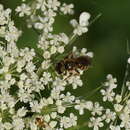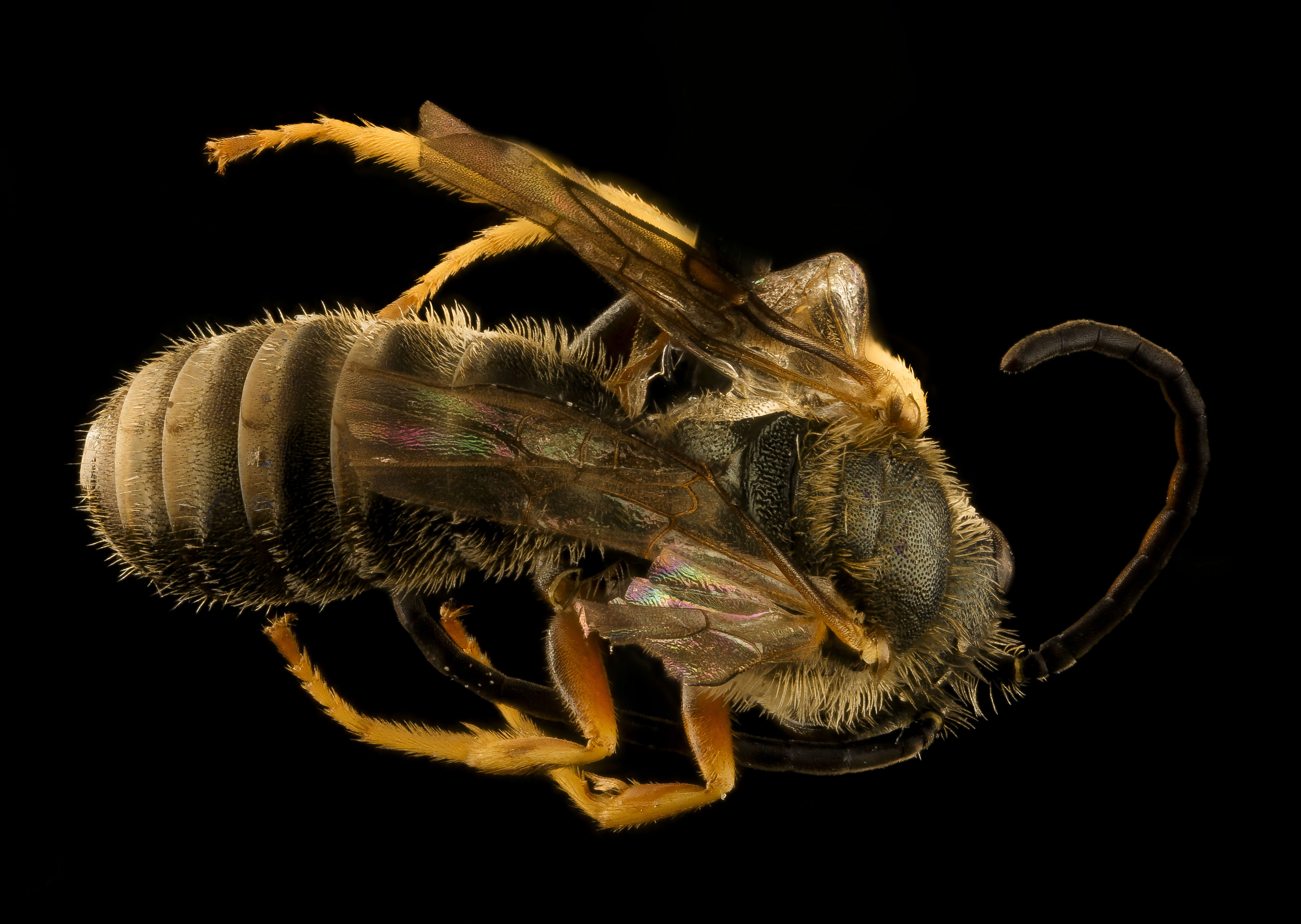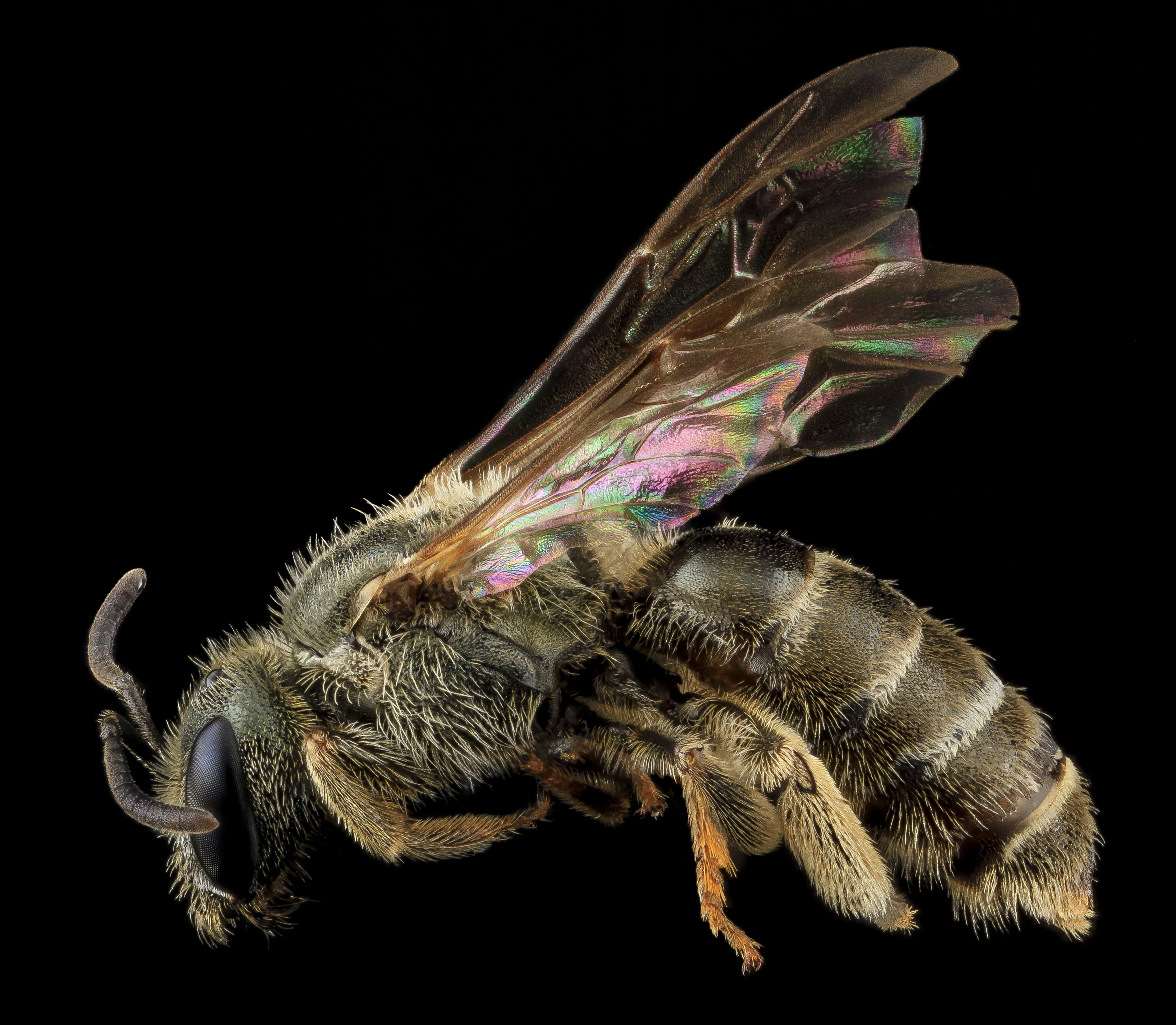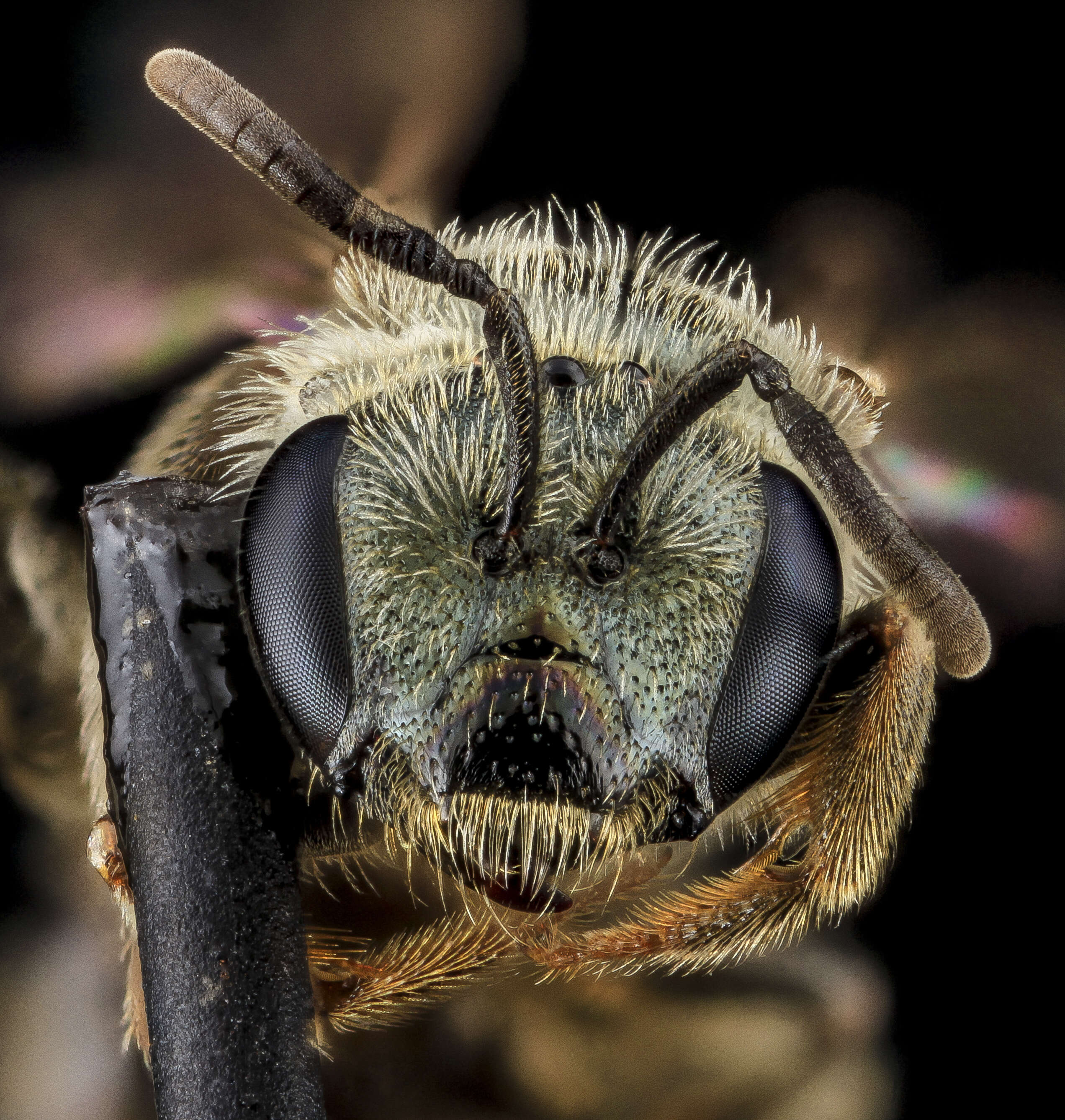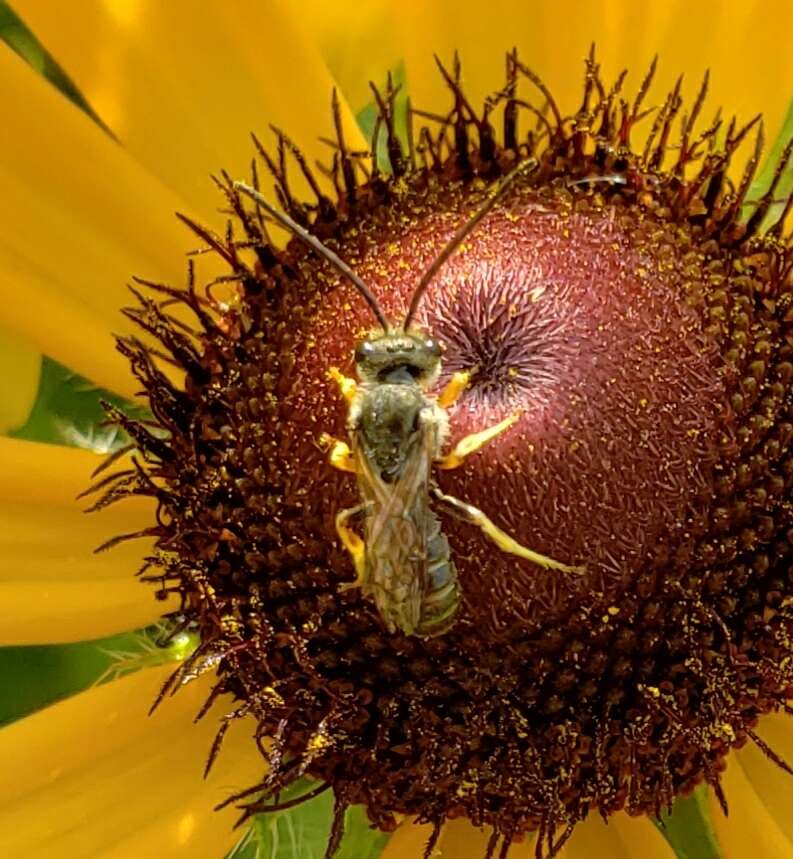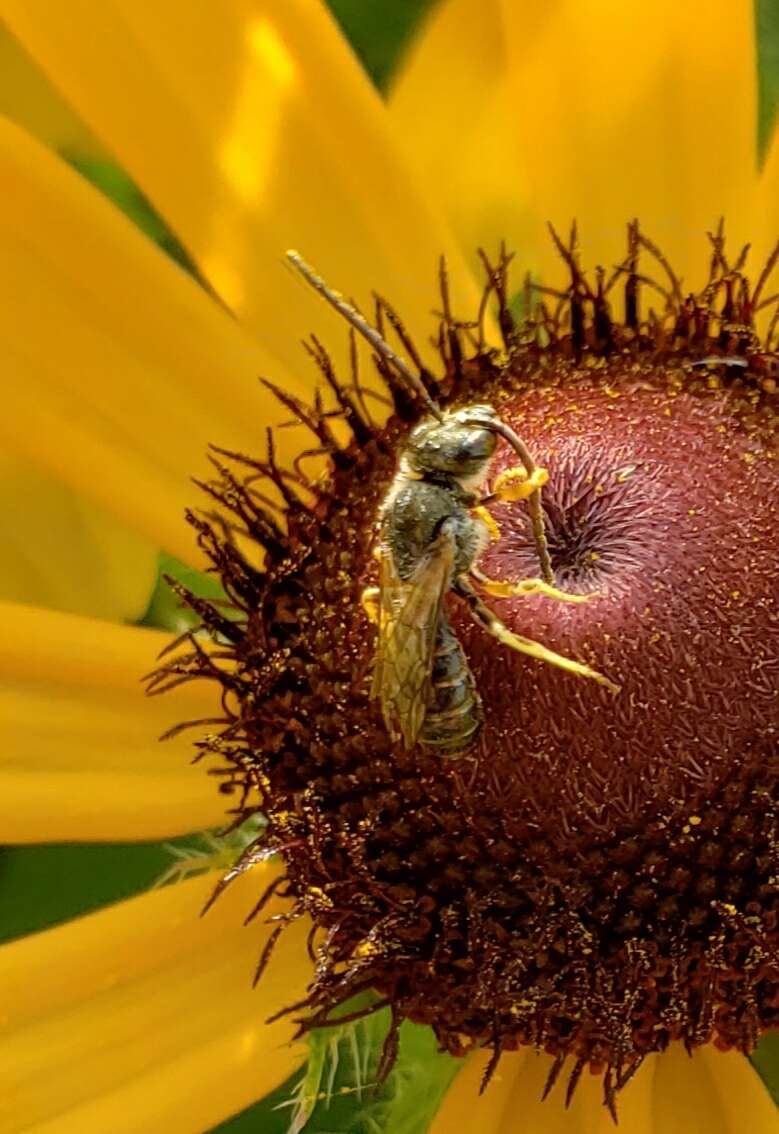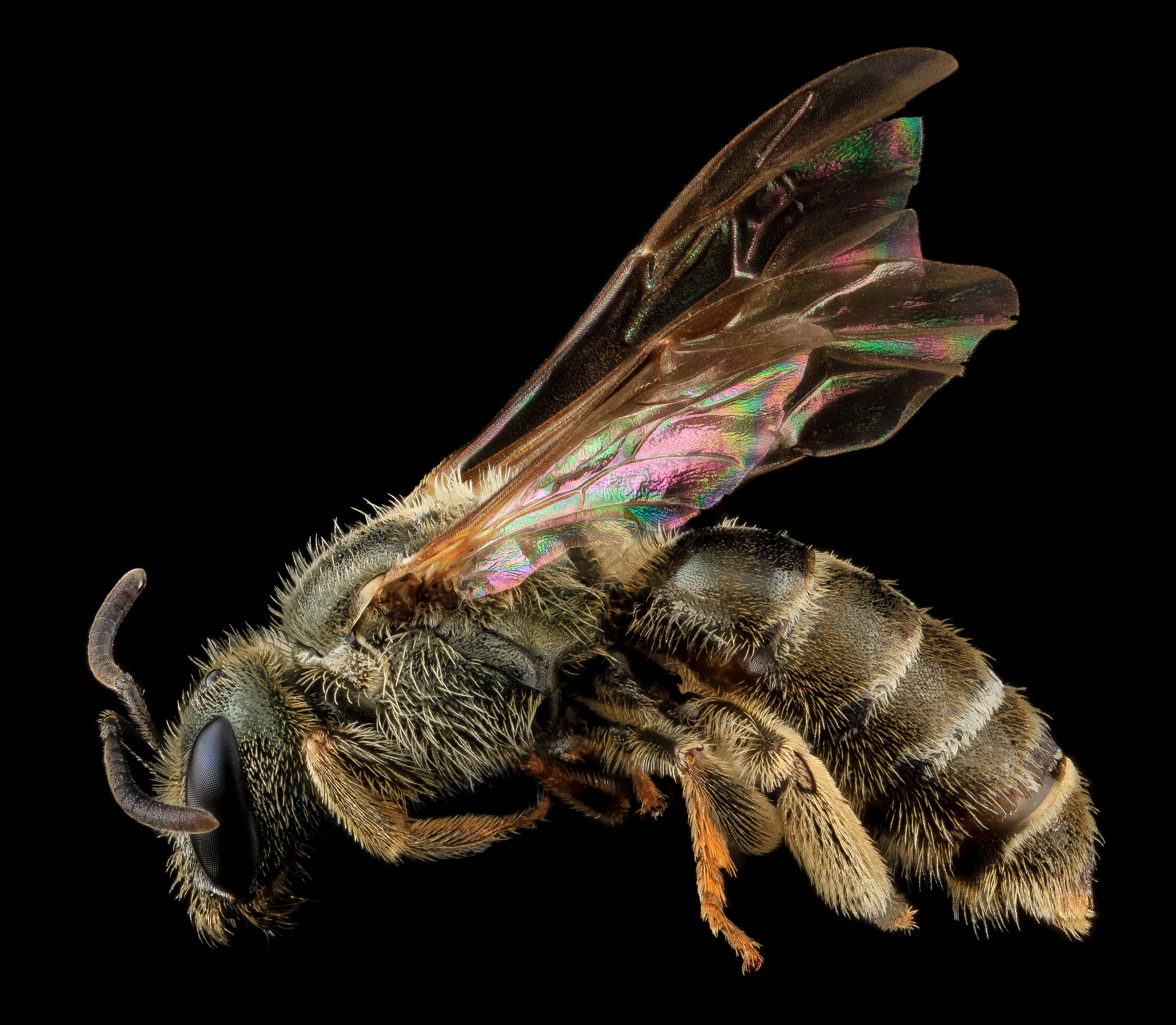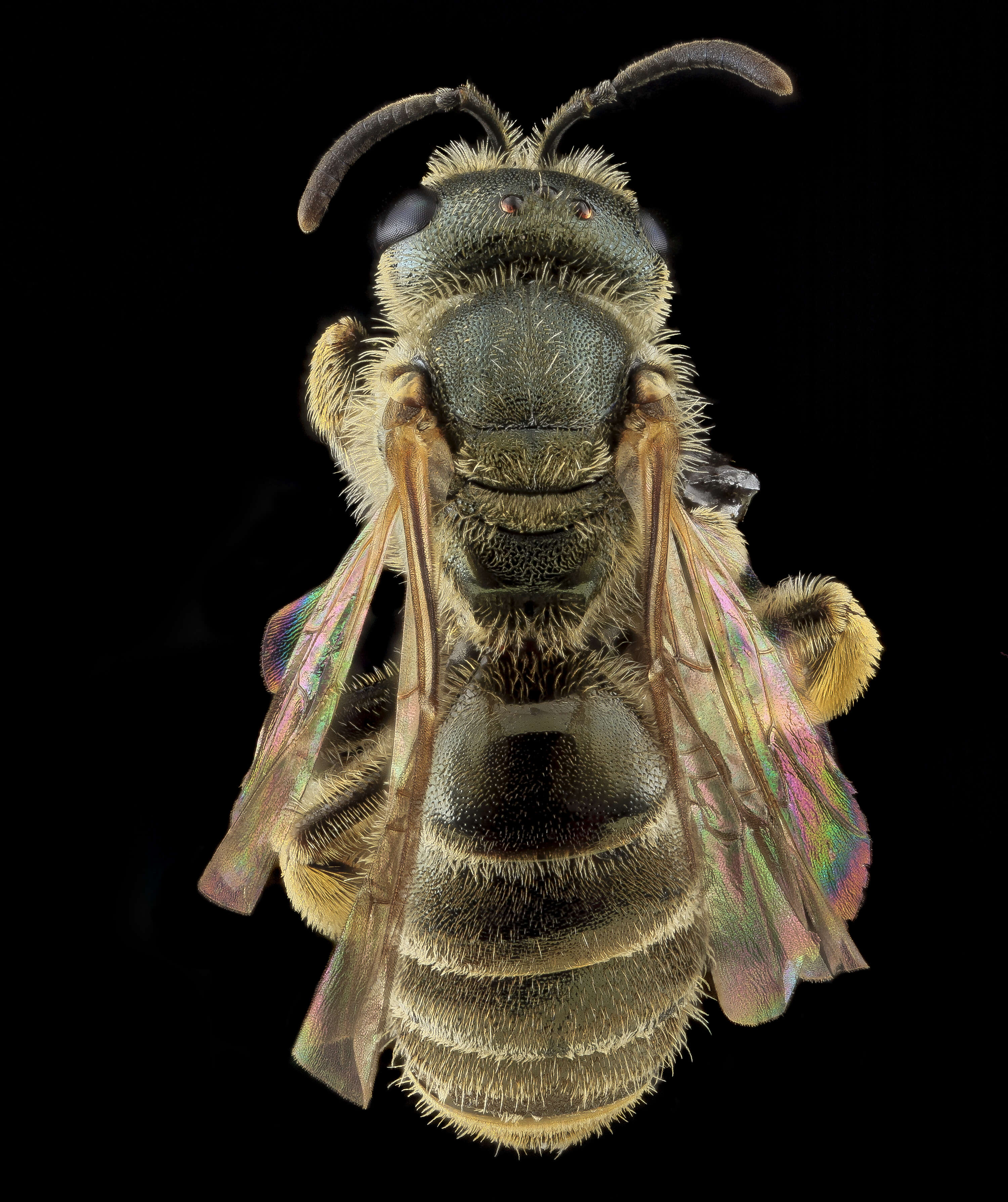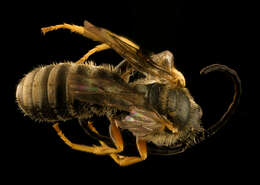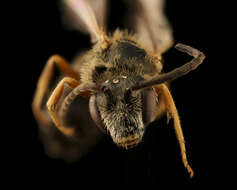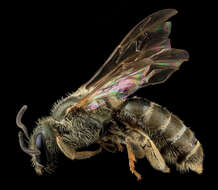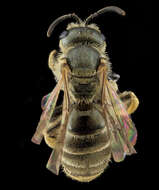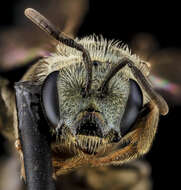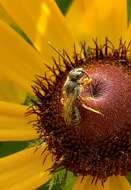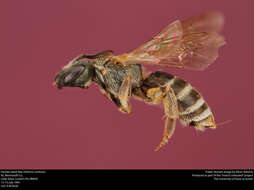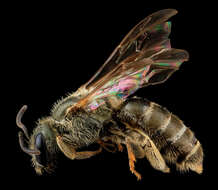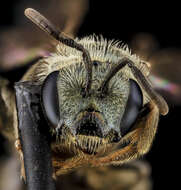Once of our dirtball species. Common, found almost everywhere including people's gardens and in our agricultural fields. This is group (Halictus) if often identifiable in the males by the the dark spot/section on the outer face of the hind tibia. If you don't key in on that they are often misidentified as Lasioglossum species, which have many species that have the dark metallic green feel your see here. Collected in Prince George's County (possibily in my garden) and photographed by Sydney Price.
~~~~~~~~~~{{{{{{0}}}}}}~~~~~~~~~~
All photographs are public domain, feel free to download and use as you wish.
Photography Information: Canon Mark II 5D, Zerene Stacker, Stackshot Sled, 65mm Canon MP-E 1-5X macro lens, Twin Macro Flash in Styrofoam Cooler, F5.0, ISO 100, Shutter Speed 200
Beauty is truth, truth beauty - that is all
Ye know on earth and all ye need to know
" Ode on a Grecian Urn"
John Keats
You can also follow us on Instagram - account = USGSBIML Want some Useful Links to the Techniques We Use? Well now here you go Citizen:
Free Field Guide to Bee Genera of Marylandhttp://bio2.elmira.edu/fieldbio/beesofmarylandbookversion1.pdf
Basic USGSBIML set up:
www.youtube.com/watch?v=S-_yvIsucOY
USGSBIML Photoshopping Technique: Note that we now have added using the burn tool at 50% opacity set to shadows to clean up the halos that bleed into the black background from "hot" color sections of the picture.
www.youtube.com/watch?v=Bdmx_8zqvN4
Bees of Maryland Organized by Taxa with information on each Genus
www.flickr.com/photos/usgsbiml/collections
PDF of Basic USGSBIML Photography Set Up:
ftp://ftpext.usgs.gov/pub/er/md/laurel/Droege/How%20to%20Take%20MacroPhotographs%20of%20Insects%20BIML%20Lab2.pdf
Google Hangout Demonstration of Techniques:
plus.google.com/events/c5569losvskrv2nu606ltof8odo
or
www.youtube.com/watch?v=4c15neFttoU
Excellent Technical Form on Stacking:
www.photomacrography.net/
Contact information:
Sam Droege
sdroege@usgs.gov
301 497 5840

